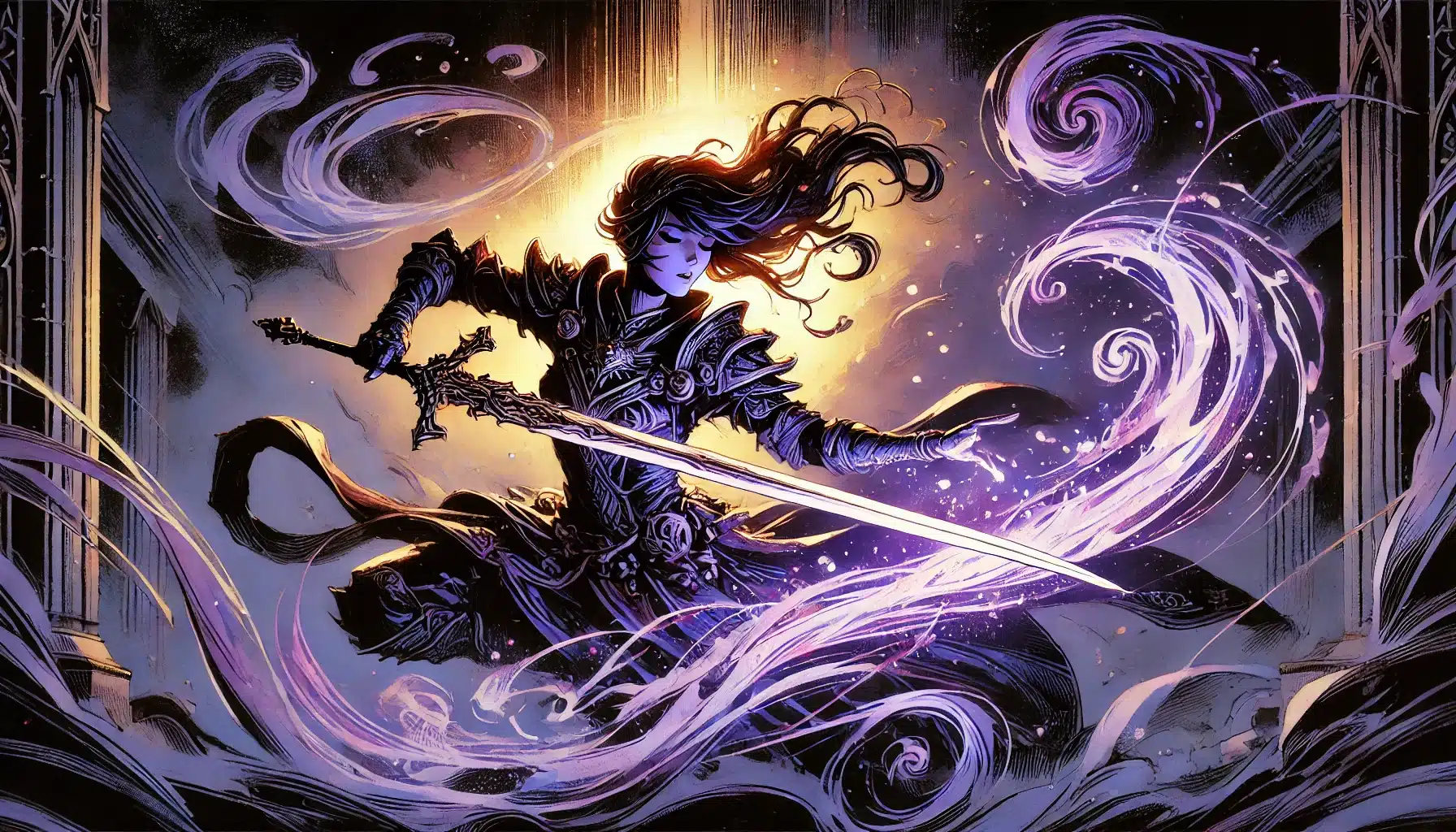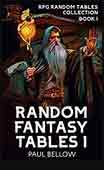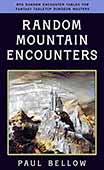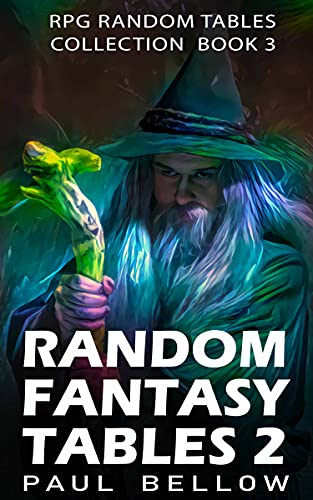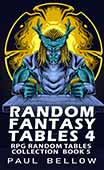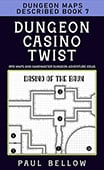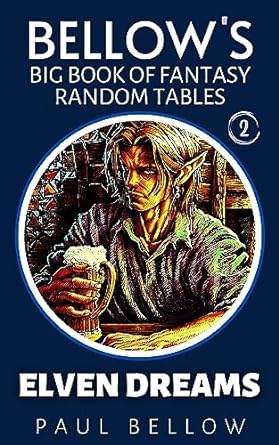Some subclasses live eternally in the collective imagination of Dungeons & Dragons players, and few have danced between blade and spell quite so gracefully as the Bladesinger. First introduced in 2015’s Sword Coast Adventurer’s Guide, the Bladesinger brought an agile, sword-wielding wizard to the fore—a character able to weave magic and steel into a symphony of destruction, defense, and performance. Its elven roots and acrobatic flair made it an instant favorite for those craving a more dynamic, kinetic flavor of spellcaster.
The story did not end there, however. In 2020, Tasha’s Cauldron of Everything offered a stunning revision, updating the Bladesinger’s features for a broader audience and removing previous racial limitations. Suddenly, players everywhere had a new toolbox—expanded proficiencies, improved action economy, and spell-sword synergies galore. The subclass became notorious for its tactical depth and rewarding gameplay, earning a spot in countless campaigns.
Fast forward to the looming arrival of the 2024 ruleset, and the future of the Bladesinger seemed uncertain. Its absence from the new Player’s Handbook was met with a mixture of anxiety and speculation: had this beloved archetype been left behind? Wizards of the Coast swiftly clarified, however, that the Bladesinger would find a home in the forthcoming Forgotten Realms Player’s Guide. This decision might have surprised some, but in truth it’s a testament to the subclass’s enduring popularity—the Bladesinger resides not simply as a ruleset oddity, but as an integral piece of the Realms’ myth and magic.
Now, anticipation simmers as fans dissect leaks and playtest Unearthed Arcana. How has the Bladesinger evolved to meet the spirit and mechanics of D&D’s next era? What refinements separate this newest iteration from its predecessors? One thing is certain: the love for the Bladesinger’s hybrid style, both deadly and beautiful, ensures its tale will spin on through many more campaigns.
Overview of the 2024 Bladesinger Subclass
At its heart, the Bladesinger is poetry in motion. This is not simply a wizard wielding a sword; it is an artist orchestrating the battlefield, each movement a calculated flourish blending martial prowess with arcane energy. Drawing inspiration from ancient elven dueling societies, Bladesingers preside at the intersection of spell and steel, moving with unmatched fluidity between offense, defense, and showmanship. Their combat is a ballet—lethal yet mesmerizing.
On the tabletop, the subclass’s mechanical identity has only grown more distinct. Agility reigns supreme: the Bladesinger uses Intelligence to fuel both magical prowess and martial precision. Every swing of the blade is imbued with arcane guidance, their footwork deft, their reflexes nearly preternatural. The subclass channels the mysterious traditions of elven sword-dancers, but its appeal crosses all racial boundaries, inviting any player with a penchant for style, speed, and clever tactics.
Try my AI Tabletop RPG generators...and an extensive library of content!
Within the Forgotten Realms, Bladesingers are more than exotic duelists; they are revered as guardians, storytellers, and living legends. In times of peace, they perform in courtly halls and bustling markets. In war, they become the stuff of legend—champions who defend their people with a dazzling blend of sword and sorcery, inspiring awe and fear in equal measure.
Feature Progression and Changes
| Feature Name | Level Acquired | Changes from 2020 Version | Description |
|---|---|---|---|
| Subclass Access | 3 | Moved from level 2 to level 3 | Gain Bladesinger features at level 3, in line with new 2024 subclass progression. |
| Bladesong | 3 | Reworked activation and duration; increased versatility | Activate as a bonus action; can now use Intelligence for attack and damage rolls; grants AC boost, speed, concentration benefits. |
| Training in War and Song | 3 | Weapon proficiencies clarified and expanded | Proficiency with all melee martial weapons (except two-handed or heavy); use melee weapons as spellcasting focus; choice of extra skills. |
| Extra Attack | 6 | Can replace one attack with a cantrip | Attack twice; may substitute one attack for a cantrip, enhancing action economy between melee and magic. |
| Song of Defense | 10 | Refined language and interaction with Bladesong | Spend spell slots as a reaction to reduce damage taken, maintaining Bladesong’s momentum during sustained combat. |
| Song of Victory | 14 | Bonus action weapon attack after spellcasting | Instead of adding Intelligence to damage rolls, now allows a weapon attack as a bonus action after casting a spell with an action. |
The shift of the subclass entry point from level 2 to level 3 aligns the Bladesinger with new design paradigms and paces its power development alongside other subclasses in the 2024 ruleset. This rebalancing means that players must more deliberately build toward this archetype, considering their early-level options carefully before unlocking their signature features.
Bladesong itself has become a far more robust and versatile core mechanic, dramatically altering the Bladesinger’s playstyle. Relying on Intelligence for attacks, mobility, and defense reaffirms the subclass’s commitment to a spell-sword identity, rather than feeling like a wizard merely dabbling in martial arts. The suite of improvements to proficiencies and skill flexibility further cements the Bladesinger’s adaptability, allowing players to shape their character to fit diverse party roles and narrative concepts.
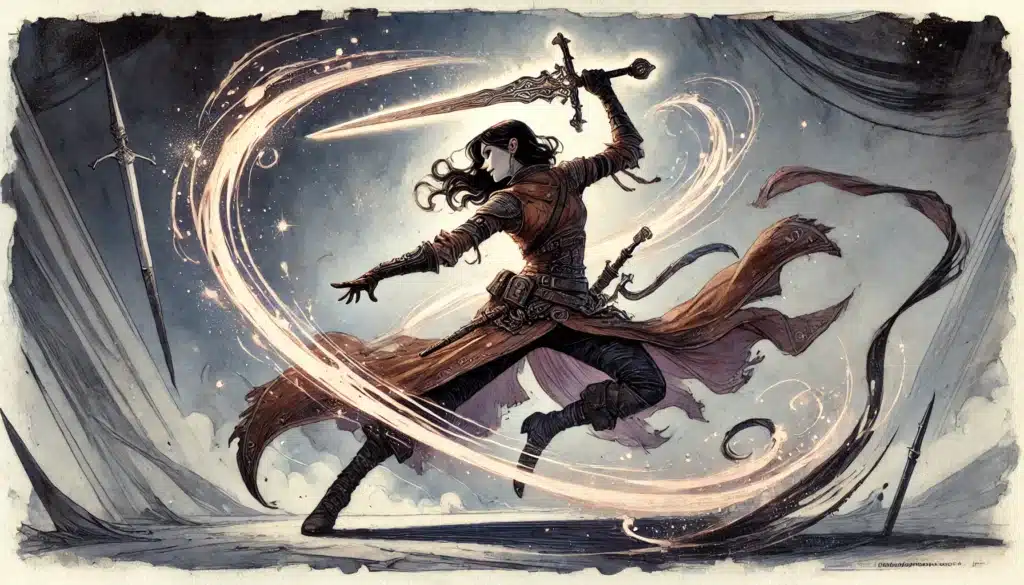
Bladesong: The Heart of the Subclass
Every Bladesinger lives—and sometimes dies—by the Bladesong, the signature ability that transforms them from a mere wizard with a sword into a whirling dervish of danger and beauty. This feature now activates as a bonus action, a subtle but crucial change: no longer is the Bladesong an awkward prelude to combat. It’s a flourish, a spontaneous surge of arcane energy that sweeps the battlefield and sets the tempo for what follows.
⚔️ Fantasy RPG Random Tables Books
Make life as a Gamemaster easier…
If you play Dungeons & Dragons, Pathfinder, or other fantasy RPGs, this
RPG random tables series
is packed with encounters, NPCs, treasure, and more. Available in eBook or print—either way, you’ll have a wealth of adventure ideas at your fingertips.
Once invoked, Bladesong endures for one minute or until certain conditions end it—like falling unconscious or wielding a non-light or non-one-handed weapon. During its duration, the Bladesinger’s AC is bolstered by their Intelligence modifier, stacking with dexterous agility and magical defense options. Movement speed increases, accentuating the subclass’s hit-and-run motif: Bladesingers dance into the fray, unleash a rapid sequence of attacks and spells, then slip away before enemies can retaliate in earnest.
A defining innovation in the 2024 update is the ability to use Intelligence for attack and damage rolls with melee weapons. No more awkwardly splitting attention between Dexterity and Intelligence—now, your magical intellect fuels every slash and parry. This not only creates thematic harmony but gives Bladesingers hardier combat stats, allowing for builds that maximize spell potency and swordplay simultaneously. Concentration checks while maintaining spells are also reinforced, letting a Bladesinger reliably juggle ongoing magical effects even in the chaos of melee.
Compared to previous versions, the new Bladesong is a true engine of versatility and empowerment. Earlier iterations focused on defense and mobility, but often required cognitive and mechanical juggling to reach peak effectiveness. The 2024 design unifies these benefits, streamlining activation and making the feature feel less like a limited buff and more like the pulse of the subclass—a rhythm that savvy players will learn to play like a master violinist.
Training in War and Song: Expanded Proficiencies
Beginning at level 3, Bladesingers receive weapon proficiencies reminiscent of noble duelists and war-mages. No longer are you stuck limply prodding with a rapier while your spells do the heavy lifting; the Bladesinger now boasts proficiency with all melee martial weapons except those that are two-handed or heavy. This arsenal includes longswords, scimitars, and other iconic blades, empowering both flavor and effectiveness.
Perhaps more impactful is the ability to use a melee weapon as a spellcasting focus. Gone are the days of awkwardly juggling wands, arcane implements, or “free hand” requirements in the heat of battle. The Bladesinger becomes a true conduit of magic, channeling spells through the very weapon they wield—a satisfying moment of mechanical grace and narrative style. Every parry and strike exudes magical energy, blurring the lines between spell and swing.
Finally, the bonus skill proficiency at level 3 offers fresh versatility outside of combat. Whether you crave stealth, acrobatics, history, or performance, the Bladesinger can now shape themselves to fit both adventuring needs and narrative aspirations. This flexibility ensures the subclass is not merely a combat powerhouse, but a vital, multidimensional member of any adventuring party.

Mid to High-Level Features
Here’s a closer look at mid to high-level features of the new Bladesinger.
Extra Attack and Cantrip Integration
At level 6, the Bladesinger receives the Extra Attack feature, echoing martial fighters’ relentless assault—but with a twist befitting their magical heritage. Now, when you take the Attack action, you can attack twice or replace one of those attacks with a cantrip. This small wrinkle transforms the Bladesinger into a perpetual hybrid—rarely needing to choose between the call of sword or spell, but instead melding both into an unbroken assault.
The mechanical implications are profound. Traditional wizards often dread being pinned in melee, their action economy limited by the binary choice of casting or retreating. The Bladesinger, however, wields both offense and utility with a fluidity that keeps foes guessing. A swift blade can be paired with a chilling Booming Blade or a tactical Shocking Grasp; the subclass nimbly combines positioning and pressure, turning each round into an unpredictable chess match.
For players, this opens doors to countless high-skill plays. Want to soften a foe with a spell, then quickly retreat? Need to finish an enemy with a well-timed slash, but also disrupt their defenses with a cantrip? The Bladesinger is endlessly adaptable, foregrounding player agency and rewarding creative play in every encounter.
Song of Defense: Magical Resilience
Reaching level 10, the Bladesinger unlocks Song of Defense, a signature feature that turns magical preparation into battlefield resilience. When the subclass takes damage, they may expend a spell slot as a reaction—a choice that reduces incoming damage by five times the slot’s level. Thematic and mechanically elegant, this gives Bladesingers a way to invest arcane energy into personal survival.
This new wording has reinforced the feature’s synergy with Bladesong. Because Bladesingers often cast and concentrate on defensive spells, Song of Defense becomes a crucial tool for maintaining those spells through the thick of combat. Whether protecting their own fate or the party’s mission, these wizards can endure punishment without losing their tempo—making risky, heroic maneuvers less likely to spell disaster.
⚔️ Fantasy RPG Random Tables Books
Make life as a Gamemaster easier…
If you play Dungeons & Dragons, Pathfinder, or other fantasy RPGs, this
RPG random tables series
is packed with encounters, NPCs, treasure, and more. Available in eBook or print—either way, you’ll have a wealth of adventure ideas at your fingertips.
The strategic ramifications are huge. Resource management now becomes a high-wire act: is it worth burning a high-level slot to shrug off a dragon’s breath or the brutal hit of a warlord? The best Bladesingers will tactically ration their spell slots, turning what might have been the wizard’s greatest vulnerability—low hit points—into a flexible bulwark. It reinforces the subclass’s identity as agile, survivable, and clever in the face of overwhelming opposition.
Song of Victory: Offensive Synergy
At the pinnacle of Bladesinger development, level 14 brings the crest of their powers: Song of Victory. In prior editions, this ability simply added your Intelligence modifier to melee weapon damage—a neat bonus, but not especially inspiring for wizards who rely on magical might. The 2024 iteration reimagines this capstone: now, after you cast a spell with your action, you can make a weapon attack as a bonus action.
This shift is more than cosmetic; it dramatically changes combat rhythm and resource expenditure. No longer is a high-level Bladesinger forced into choosing between a spell or a sword attack. Instead, they can open a round with a thunderous evocation, then dart forward to deliver a decisive strike—all within a single turn. The subclass synchronizes spellcasting and combat, letting the wizard fully embrace their hybrid role and maximize their offense in every round.
It’s an elegant solution to action-economy bottlenecks that plagued the subclass’s top-end in previous editions. Whether hurling a fireball or disabling enemies with crowd control, the Bladesinger can effortlessly capitalize on openings, bringing the full weight of both magic and martial prowess to bear. In the hands of a tactical player, this feature turns every encounter into a symphony of destruction, where rhythm and timing are everything.
Strategic Considerations and Build Options
As players delve into the intricacies of the Bladesinger subclass, understanding the strategic considerations and potential build options becomes paramount. The Bladesinger’s unique blend of spellcasting and martial prowess invites a wealth of interpretations, each catering to different playstyles and party roles. Whether you envision your character as a nimble skirmisher, a stalwart protector, or a charismatic performer, careful selection of ability scores, feats, race, and background can forge a truly memorable and effective Bladesinger.
Optimizing Ability Scores and Feats
- Maximize Intelligence to fuel both spellcasting and melee prowess via Bladesong.
- Dexterity should be your next priority for initiative and physical defenses.
- Consider War Caster for unparalleled concentration during Bladesong.
- Mobile feat increases both movement and tactical disengagement options.
- Resilient (Constitution) grants vital saving throw proficiency to protect concentration spells.
- Dual Wielder enables the use of two light weapons for thematic flair and additional AC.
- Fey Touched feat grants extra misty steps, boosting mobility and slot flexibility.
- Shadow Touched for utility spells like Invisibility without dipping into wizard spell slots.
- Alert for consistently high initiative, ensuring you control the flow of battle.
- Select defensive spells like Mirror Image and Shield to synergize with high AC.
- Favor concentration spells that remain potent throughout a fight (Haste, Blur).
- Elemental Adept if specializing in a particular damage type for cantrips and spells.
- Green-Flame Blade or Booming Blade as staple melee cantrips for action economy.
Optimizing a Bladesinger requires intentional balancing between raw arcane power and physical finesse. Maximizing Intelligence doubles as an investment in both your spell DC and your attack accuracy—a signature feature of the 2024 design. Strategic feat selection, especially War Caster and Mobile, elevates the subclass into a perpetual-motion engine: hard to pin down, hard to hit, and always threatening both at range and up close.
These build choices mean you can sculpt your Bladesinger to fit a dozen different molds—a stoic frontliner with high defenses, a roguish skirmisher darting around the battlefield, or even a party face who dazzles with Performance and Acrobatics when the swords are sheathed. The subclass remains one of the most customization-friendly wizard archetypes ever printed.
Try my AI Tabletop RPG generators...and an extensive library of content!
Race and Background Synergies
- High Elf: Bonus cantrip, Dexterity boost, deep elven flavor.
- Half-Elf: Versatile ability scores, extra skills, and social adaptability.
- Forest Gnome: Intelligence boost, Minor Illusion cantrip, natural stealth.
- Satyr (with DM approval): Magic Resistance, increased movement.
- Vedalken: Intelligence bonus, advantage on mental saves, tool proficiencies.
- Shadar-Kai Elf: Necrotic resistance, teleportation for repositioning.
- Custom Lineage: Flexible ability allocation and bonus feat at level 1.
- Aarakocra: Flight for the ultimate skirmisher build.
- Sage: Two knowledge skills, enhanced arcane mastery.
- Entertainer: Performance proficiency for blending martial and bardic styles.
- Cloistered Scholar: Lore and languages for a scholarly duelist motif.
Choosing the right race and background can dramatically enhance your Bladesinger’s capabilities and characterization. Elves will always fit the archetype’s flavor, but races with Intelligence bonuses or mobility options bring mechanical edge and narrative depth. High Elf and Shadar-Kai offer classic, iconic spins, while custom lineage or gnomes allow for creative, outside-the-box builds.
Backgrounds like Sage and Cloistered Scholar lean into magical tradition, providing extra skills and knowledge to leverage in and out of battle. Meanwhile, Entertainer or Folk Hero backgrounds foster characters at home both on the battlefield and stage—a perfect echo of the Bladesinger’s role as both guardian and performer.
Community Feedback and Playtest Insights
The 2024 Bladesinger has generated waves of discussion on forums, Discord servers, and social channels. Many longtime fans have praised the enhanced clarity and unified mechanics, especially the seamless integration of Intelligence as the true heart of the subclass. Players love being able to wield a sword with the same confidence as a spellbook, removing the feel-bad moments of awkward stat splits.
However, some critics have expressed concerns about potential power creep. The ability to stack AC, avoid split-stat builds, and maintain concentration means even experienced Dungeon Masters are eyeing the Bladesinger’s durability and offense with cautious optimism. Some discussions call for close watch during extended playtests, worried that the subclass might overshadow other martial or magic hybrids.
Players are especially vocal about the subclass’s role in parties—does its flexibility and action economy make it too reliable as both damage dealer and controller? Wizards of the Coast has responded by encouraging continued feedback and promising further balance tweaks before the official Forgotten Realms Player’s Guide drops. If past cycles are any indication, community engagement and careful tuning will smooth out remaining rough edges.
DND 2024: The Bladesinger’s Evolution
From its Sword Coast debut to its Tasha’s reimagining, the Bladesinger has remained a beacon for players entranced by the promise of blending martial and magical might. Each edition has further refined its aesthetic and mechanical complexity, peeling back layers to reveal ever more satisfying play patterns for those relentless enough to master both sword and spell.
The 2024 ruleset marks a pivotal chapter in that journey. The changes are not arbitrary tweaks but a thoughtful elevation of the subclass’s best qualities: a sharper focus on Intelligence, streamlined action economy, and expanded opportunities for both combat and roleplay. The decision to withhold it from the new Player’s Handbook and instead spotlight it in the Forgotten Realms Player’s Guide only underscores its mythic, specialized allure.
For old fans and new players alike, the revised Bladesinger is a masterclass in design evolution—an example of how D&D’s living ruleset can adapt to player feedback while preserving the spirit that made the subclass iconic. Its capacity for self-expression, tactical depth, and showmanship ensures it will continue to draw creative minds and dramatic souls to the table.
As always, the input of the community—via playtests, forum debates, and actual campaign experience—remains the final, crucial ingredient in the Bladesinger’s ongoing tale. With the current version, Wizards of the Coast is inviting players everywhere to help shape a tradition that, like the best dances, evolves with every generation.
Additional Resources
- Official Unearthed Arcana: Wizard Subclasses (2024 Playtest)
- D&D Beyond – Bladesinger Wizard Overview
- Wizards of the Coast – Tasha’s Cauldron of Everything Subclass Updates
- Sage Advice: Bladesinger FAQs
- Enworld Forums – 2024 Bladesinger Playtest Discussion
- Reddit: r/dndnext – Bladesinger 2024 Build Theories & Reviews
- Twitter/X – #Bladesinger2024 Community Reactions
- YouTube: Web DM on the Bladesinger’s Evolution

